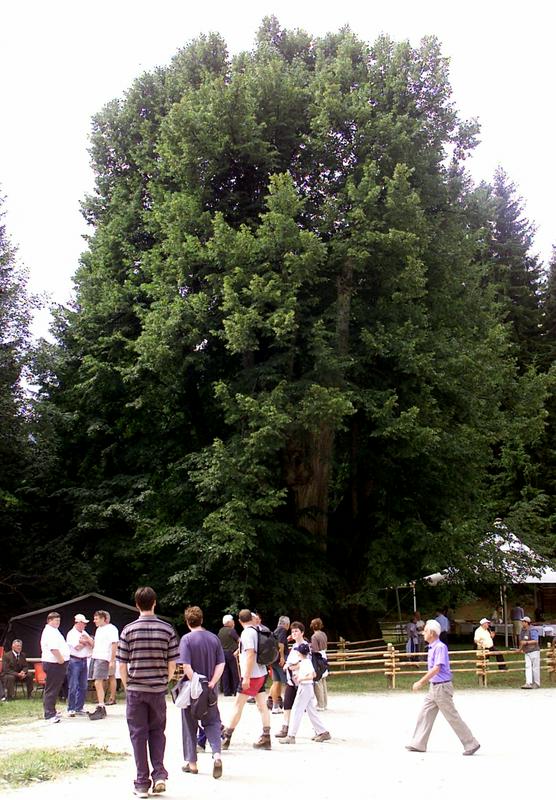
Long before European first set foot on the American continent, a delicate linden tree seedling emerged from the ground in what is now Slovenia’s Koroška (Carinthia) region. Now, seven centuries later, the Najevnik Linden (Najevska lipa in Slovenian) is not just one of the oldest trees in Slovenia, but is also believed to be the tree with the thickest trunk in the country.
Named after a nearby homestead, the Najevnik Linden has a circumference of more than ten meters – well over 30 feet. Its age is less certain, mostly because its core has become hollow, preventing experts from counting its tree rings. Estimates place its age at around 700 years.
The Najevnik Linden’s venerable girth and age has made it a local landmark. For centuries, old linden trees in Slovenian villages served as a meeting place for the locals – a focal point for debate and deal-making. The Najevnik Linden now tree plays the same role, but on a national scale. Since independence, Slovenia’s leading politicians have gathered under the tree at the start of each summer.
But the Najevnik Linden’s symbolic significance dates back centuries. According to Slovenian folk tradition, the Turks stopped by the trees after they were defeated by the legendary King Matjaž. They ate their meal with golden spoons and left them buried under the tree. Another legend states that the Turks buried a secret treasure where the tree now stands and planted the linden so that they could, one day, recover its riches.
Later, the tree served as a gathering spot for nearby villagers. They would sing folk songs, organize picnics, and even play boules under the majestic tree.
But because of its age, the condition of the Najevnik Linden had deteriorated by the late 20th century. The trunk in particular had rotted out significantly in parts, making the tree vulnerable to disease. In 1993, experts performed what was described as “tree surgery” on the linden: They removed rotten wood from the tree’s interior, giving the tree back much of its health. Since then, the condition of the tree has been stable, raising the hopes of its many admirers that the majestic linden will continue to cast its impressive shade for decades to come.

































































